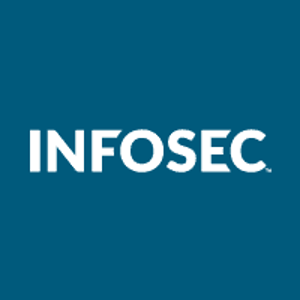What is security awareness: Definition, history and types
Investing in security awareness training and building a cyber-secure workforce is important for all modern companies. Learn about the various security awareness types and tips on protecting your business from emerging threats.
The definition of security awareness
What is security awareness training? It’s a formal process for educating employees about cybersecurity best practices to better navigate the many cybersecurity threats they may face at work and at home. Security awareness can include:
-
Programs to educate employees about common threats
-
Phishing simulations and other interactive methods to show real-world examples of threats
-
Individual responsibility for company security policies
-
Metrics to gauge a company’s success — from phish rate to culture surveys
Phishing simulations & training
![]()
An effective security awareness program is crucial for any organization, but it's not enough to simply provide training to employees. Organizations must measure the program’s effectiveness. Accountability is also key, as employees need to understand the importance of following security protocols and the consequences of not doing so. By taking these steps, organizations can better protect themselves against security threats and mitigate the risk of data breaches.
Security awareness training can be broken into four stages:
-
Determining the current state of employee security awareness and culture
-
Developing a security awareness program — from topics to frequency to target success metrics
-
Deploying the security awareness program to employees
-
Measuring the effectiveness of the program and revising as necessary
Before we begin describing the various types of security awareness, it may be helpful to understand how it all started.
A brief history of security awareness
Cybersecurity has been around since the early days of the internet. Unfortunately, as the World Wide Web became more popular in the 1980s, individuals like the 414s group hacked into 60 computers across different institutions. This prompted the creation of the Computer Fraud and Abuse Act.
The 1980s concluded with the first notable worm attack by Robert Morris, which virtually paralyzed the internet and highlighted the network's vulnerability. The attack resulted in the creation of CERTs and fueled the concept of preventative cybersecurity.
Due to limited internet usage, the 1990s saw the continuation of hacking attempts primarily targeting government agencies and large corporations. However, mainstream users felt the threat in 1997 when hackers targeted Yahoo!, falsely claiming they'd detonate a "logic bomb" unless hacker Kevin Mitnick was freed.
The Bureau of Labor Statistics was targeted in a significant spamming incident in 1998. Following these attacks, the U.S. Justice Department launched the National Infrastructure Protection Center to shield the nation's key systems from hackers.
The rise of modern hacking
The early to late 2000s marked the transformation of hacking into a significant global issue, largely due to the growing number of internet users and the simplification of hacking techniques. Information on executing hacks became widely accessible, enabling individuals without prior experience to become threats within weeks.
In 2005, Albert Gonzalez formed a hacker syndicate that stole data from over 45 million payment cards issued by U.S. retailer TJX, causing $265 million in damages before his arrest. The incident required companies to notify authorities due to the regulated nature of the stolen data and compensate victims. This marked a turning point, underlining the gravity of hacking beyond being a mere nuisance.
Modern-day security awareness
Over the previous decade, cybercrime has grown into an enormous industry with a huge impact on organizations. Cybersecurity Ventures expects the cost of cybercrime to hit $10.5 trillion by 2025. A few examples include the rise of ransomware, which has seen payments hit tens of millions of dollars for a single incident, and the rise of cryptocurrencies and subscription-as-a-service malware, which has greatly expanded the pool of potential threat actors by allowing those without a technical background to easily purchase off the shelf solutions with some anonymity.
This ease, along with so many more apps and services bringing people online, has made basic cybersecurity skills an essential skill for nearly every employee.
Phishing simulations & training
Types of security awareness
With the above in mind, it’s clear companies must learn what security awareness training is and take it seriously.
There are multiple types of security awareness training topics to include in your programs, such as:
-
Email scams: Email scams primarily involve phishing and spearphishing attempts. These are fraudulent practices where scammers impersonate legitimate businesses or acquaintances to trick individuals into revealing personal or financial information. It is crucial to scrutinize email addresses, links and attachments and check for signs of deceit.
-
Malware: Malware is malicious software such as viruses, worms, trojans, ransomware, spyware and adware. Employees should understand how malware is spread (via email attachments, infected software downloads, malicious websites) and how to protect themselves by using reliable antivirus software, firewall protection and safe browsing habits.
-
Password security: Password security awareness involves understanding the importance of strong, unique passwords for all accounts and following company best practices around secure passwords (passphrases or a mix of uppercase, lowercase, numbers and symbols). It also involves knowledge of multi-factor authentication (MFA) practices and not sharing passwords.
-
Removable media: There are risks associated with using removable media, such as USBs, external hard drives and SD cards. If infected, they can inadvertently spread malware. If lost, they can lead to data breaches. Best practices include only using trusted devices, scanning all removable media for viruses before use and avoiding their use for sensitive data if possible.
-
Safe internet habits: This involves understanding best practices for safe web browsing, including recognizing secure websites (https), being cautious about downloading files or software from unknown sources, not clicking on suspicious links and being mindful about sharing personal or financial information online.
-
Social networking dangers: This refers to the awareness of threats associated with using social media platforms. Threats can include phishing attempts, identity theft, cyberstalking or cyberbullying. Good practices include adjusting privacy settings, being cautious about what information is shared and being vigilant for impersonators or suspicious messages.
If you’d like more ideas to cover in your security awareness program, check out our top 10 security awareness topics article.
Strategies for security awareness training
You should keep a few best practices in mind when developing a security awareness training program.
Top-down approach
It can’t simply be the duty of the employees to learn security best practices on their own; a top-down approach is required. A top-down approach benefits everyone in your organization, from executives to the employees they manage. This approach ensures consistency in resource allocation and ensures buy-in from senior management, which can be crucial to the success of a program.
Organizational structure dedicated to security awareness
Having an organizational structure built around security will make everyone’s job simpler. If at all possible, you should have a team of people who are responsible for implementing your security awareness program. This may include an administrator who owns the program and a security champion in each area of the organization who can help drive adoption and support building a security culture. If roles are not clearly defined, security awareness training can become a chore that gets passed around and never fully adopted.
Create a plan with goals and documentation
Starting with a mission statement can help. Why are you building a security awareness program? What behaviors are you hoping to change? How will you measure that change — and how often? Also, include a yearly calendar of activities that aligns with those goals. These activities should educate employees on common threats and provide actionable advice about their role in preventing those threats. It’s also important to bring new employees up to speed about the security awareness program, their role, and references to company security policies and procedures.
Using different forms of media to reinforce the message
The best security awareness programs use a variety of formats to engage employees, from emails to animations to colorful posters. For example, videos and resources can be sent out over email. Short assessments and fun games can encourage participation and help measure results. Posters and other reminders around the office can keep security awareness top of mind. The important thing is to think of the different types of security awareness training and layer in ways to keep employees engaged throughout the year.
Highlight recent attacks in the news
Don’t let your security training be theoretical. Show your employees how prevalent these attacks are, how easily one could succeed with your company, and what the fallout entails. For this reason, don’t simply highlight the stories that make national news. Find the stories about companies in your industry or with similar markets. Sadly, it doesn’t look like there will be any lack of these incidents going forward.
Seek professional services
Regarding security awareness training, you have three general options: do nothing, do it yourself or work with a vendor. Using a vendor often provides the best ROI, as developing the training content and tools necessary for a successful program may end up costing more time, resources and headaches than using an established vendor. Many vendors will support you every step of the way, so you can get set up and launch your program with relative ease vs. starting from scratch. Be sure to check out review sites like G2, our list of the 10 best security awareness vendors.

Get six free posters
Reinforce cybersecurity best practices with six eye-catching posters found in our free poster kit from our award-winning series, Work Bytes.
Security awareness in 2023 and beyond
Cybercrime isn’t slowing down. Combined with the rise of working from home and the expansion of AI technology — which is increasingly being used by cybercriminals — understanding what security awareness is and how to implement a program at your organization is necessary for every organization.
When done correctly, a strong security awareness and training program can educate and empower your workforce, elevate the security culture and create an environment that greatly reduces the human risk facing your organization.
Are you ready to take your security awareness program to the next level? Check out the Infosec Resource Center for more free resources, or learn how the Infosec IQ security awareness and phishing simulation platform can help.








